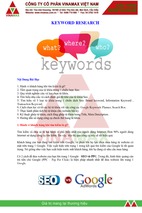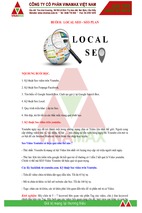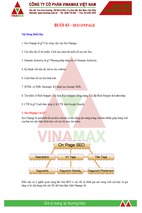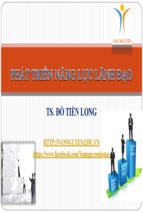Seventh edition
Richard Lynch
Strategic Management is one of the world’s leading strategy textbooks, covering all the major topics
particularly from a global perspective. It delivers comprehensive coverage of the subject in an
easy-to-read style with extensive examples and a range of free support material that will help you learn
actively and effectively.
This seventh edition of Strategic Management builds on proven strengths …
• over 70 short case studies to provide easily accessible illustrations of strategy in practice
• over 12 longer cases to provide more in-depth examples of recent strategic decisions involving
Sony, Apple and other major companies
• a continuous contrast between prescriptive and emergent views of strategy to highlight the key
debates within the discipline
• emphasis on practice throughout with features to help you turn theory into practice
• major international strategy cases from Europe, Africa, Asia and the Americas
• clear exploration of the key concepts
• comprehensive, logical structure to guide you through this complex subject.
Improve your grade!
New for the seventh edition:
Two new chapters:
• Green strategy and sustainability
• Strategy and business models
In addition, green strategy examples continue to
be highlighted throughout the text – look out for
the green strategy symbol.
Green
s
tra
teg y
Plus a range of new and updated strategy cases:
• Eighteen new short cases including cases
from the Middle East, Russia, India and China
• Twelve new longer cases
So, if you want to know how, when and why
you might be making strategic decisions
for tomorrow and beyond and learn from
the successful (and less successful)
strategies of Facebook, Nintendo, Subway,
Google, Kodak, Nokia, Yahoo! and many
more, then open up and read on!
www.pearson-books.com
CVR_LYNC4666_07_SE_CVR.indd 1
Strategic
Management
free
open-acces
s online
learning res
ources
Seventh edition
Richard Lynch
Front cover image:
© Getty Images
Richard Lynch is Emeritus Professor of Strategic Management
at Middlesex University, London. He is an active researcher,
lecturer and consultant, particularly in the area of global
strategy and sustainable strategy.
Seventh
edition
Lynch
It also includes a wealth of new, online,
open-access learning resources.
The seventh edition of Strategic
Management comes with free,
open-access learning resources at
www.pearsoned.co.uk/lynch. Use these
materials to enhance and test your
knowledge with a wealth of resources
including videos, audio summaries,
multiple-choice questions and much more!
Strategic Management
Strategic Management
15/12/2014 12:05
Strategic
Management
A01_LYNC4666_07_SE_FM.indd i
12/11/14 9:00 AM
A01_LYNC4666_07_SE_FM.indd ii
12/11/14 9:00 AM
Strategic
Management
Seventh Edition
Richard Lynch
A01_LYNC4666_07_SE_FM.indd iii
12/11/14 9:00 AM
PEARSON EDUCATION LIMITED
Edinburgh Gate
Harlow CM20 2JE
United Kingdom
Tel: +44 (0)1279 623623
Web: www.pearson.com/uk
First published 1997 (print) (as Corporate Strategy)
Second edition 2000 (print)
Third edition 2003 (print)
Fourth edition 2006 (print)
Fifth edition 2009 (print) (as Strategic Management)
Sixth edition 2012 (print)
Seventh edition published 2015 (print and electronic)
© Aldersgate Consultancy Limited 1997, 2000 (print)
© Richard Lynch 2003, 2006 (print)
© Richard Lynch 2009, 2012 (print)
© Richard Lynch 2015 (print and electronic)
The right of Richard Lynch to be identified as author of this work has been asserted by him in accordance with
the Copyright, Designs and Patents Act 1988.
The print publication is protected by copyright. Prior to any prohibited reproduction, storage in a retrieval
system, distribution or transmission in any form or by any means, electronic, mechanical, recording or
otherwise, permission should be obtained from the publisher or, where applicable, a licence permitting
restricted copying in the United Kingdom should be obtained from the Copyright Licensing Agency Ltd,
Saffron House, 6–10 Kirby Street, London EC1N 8TS.
The ePublication is protected by copyright and must not be copied, reproduced, transferred, distributed, leased,
licensed or publicly performed or used in any way except as specifically Neografia permitted in writing by the
publishers, as allowed under the terms and conditions under which it was purchased, or as strictly permitted by
applicable copyright law. Any unauthorised distribution or use of this text may be a direct infringement of the
author's and the publishers' rights and those responsible may be liable in law accordingly.
All trademarks used herein are the property of their respective owners. The use of any trademark in this text does
not vest in the author or publisher any trademark ownership rights in such trademarks, nor does the use of such
trademarks imply any affiliation with or endorsement of this book by such owners.
Contains public sector information licensed under the Open Government Licence (OGL) v1.0.
www.nationalarchives.gov.uk/doc/open-government-licence.
Pearson Education is not responsible for the content of third-party internet sites.
ISBN: 978-1-292-06466-6 (print)
978-1-292-06468-0 (PDF)
978-0-292-06470-3 (eText)
British Library Cataloguing-in-Publication Data
A catalogue record for the print edition is available from the British Library
Library of Congress Cataloging-in-Publication Data
Lynch, Richard L.
Strategic management / Richard Lynch. -- Seventh edition.
pages cm
ISBN 978-1-292-06466-6 (print) -- ISBN 978-1-292-06468-0 (PDF) -- ISBN 978-0-292-06470-3
(eText)
1. Strategic planning. 2. Business planning. I. Title.
HD30.28.L92 2015
658.4′012--dc23
2014039211
10 9 8 7 6 5 4 3 2 1
18 17 16 15 14
Cover image © Getty Images
Print edition typeset in 10/12pt Garamond MT Pro by 35
Print edition printed and bound in Slovakia by Neografia
NOTE THAT ANY PAGE CROSS REFERENCES REFER TO THE PRINT EDITION
A01_LYNC4666_07_SE_FM.indd iv
12/11/14 9:00 AM
BRIEF CONTENTS
About the seventh edition
How to use this book
Guided tour
Guide to the main focus of case studies
Acknowledgements
Publisher’s acknowledgements
PART 1
Introduction
1 Strategic management
2 A review of theory and practice
PART 2
Strategic analysis and purpose
3
4
5
6
7
PART 3
Developing the strategy
8
9
10
11
12
PART 4
Analysing the strategic environment
Analysing resources and capabilities
Strategy dynamics
Prescriptive purpose delivered through mission, objectives and ethics
Purpose emerging from knowledge, technology and innovation
Developing business-level strategy options
Developing corporate-level strategy options
Strategy evaluation and development: the prescriptive process
Finding the strategic route forward: mainly emergent approaches
Organisational structure, style and people issues
The implementation process
13 Implementing and controlling the strategic plan
14 Green strategy and sustainability
15 Managing strategic change
PART 5
Different strategy contexts and business models
16
17
18
19
20
A01_LYNC4666_07_SE_FM.indd v
Strategic leadership
Entrepreneurial strategy
Government, public sector and not-for-profit strategies
International expansion and globalisation strategies
Strategy and business models
xii
xviii
xix
xxii
xxv
xxviii
2
5
29
62
65
109
155
195
229
262
265
302
332
368
401
436
439
471
497
528
531
556
579
612
651
12/17/14 12:15 PM
vi
BRIEF CONTENTS
PART 6
Integrative and longer case studies
Glossary
Indexes
A01_LYNC4666_07_SE_FM.indd vi
670
741
751
12/11/14 9:00 AM
CONTENTS
About the seventh edition
How to use this book
Guided tour
Guide to the main focus of case studies
Acknowledgements
Publisher’s acknowledgements
PART 1 Introduction
1
Strategic management
1.1
1.2
1.3
1.4
1.5
2
Introduction
Case study 1.1
What is strategic management?
The main topics covered in strategy
Case study 1.2
Core areas of strategic management
Context, content and process
Process: linking the three core areas
Case study 1.3
Critical reflection
Summary
Questions
Further reading
Notes and references
A review of theory and practice
2.1
2.2
2.3
2.4
2.5
Introduction
Case study 2.1
Prescriptive strategic management in theory
and practice
Emergent strategic management in theory
and practice
Case study 2.2
Some prescriptive theories of strategic
management
Case study 2.3
Some emergent theories of strategic
management
The purpose of the organisation:
shareholders, stakeholders and ‘above
average returns’
Case study 2.4
Critical reflection
Summary
Questions
Further reading
Notes and references
A01_LYNC4666_07_SE_FM.indd vii
xii
xviii
xix
xxii
xxv
xxviii
PART 2 Strategic analysis and purpose
3
Analysing the strategic environment
3.1
3.2
3.3
3.4
2
5
3.5
5
6
8
10
14
16
18
20
23
25
26
26
27
27
3.6
3.7
3.8
3.9
3.10
29
29
30
4
Analysing resources and capabilities
31
34
37
4.1
4.2
39
45
4.3
4.4
47
4.5
52
53
57
57
58
59
59
Introduction
Case study 3.1
Exploring the competitive environment
Strategic environment – the basics
Degree of turbulence in the environment
Analysing the general environment
Case study 3.2
Analysing the stages of market growth
Case study 3.3
Key factors for success in an industry
Case study 3.4
Analysing the competitive industry
environment – the contribution of Porter
Analysing the co-operative environment
Analysing one or more immediate
competitors in depth
Analysing the customer and market
segmentation
Case study 3.5
Critical reflection
Summary
Questions
Further reading
Notes and references
4.6
4.7
4.8
Introduction
Case study 4.1
Analysing resources and capabilities
Why does an organisation possess any
resources at all? The make-or-buy decision
Resource analysis and adding value
Adding value: the value chain and the value
system – the contribution of Porter
Case study 4.2
Resource analysis and competitive
advantage – the resource-based view (RBV)
Identifying which resources and capabilities
deliver sustainable competitive advantage
Resource and capability analysis – improving
competitive advantage
Analysing other important company
resources: especially human resources
Case study 4.3
62
65
65
66
67
70
71
73
77
78
80
83
86
88
93
96
98
103
105
106
107
107
107
109
109
110
112
117
118
119
125
129
135
140
142
148
12/17/14 12:15 PM
viii
CONTENTS
Critical reflection
Summary
Questions
Further reading
Notes and references
5
Strategy dynamics
5.1
5.2
5.3
5.4
5.5
5.6
5.7
Introduction
Case study 5.1
Developing a dynamic business framework
Case study 5.2
The dynamics of an organisation’s changing
and uncertain environment
Case study 5.3
Dynamic strategies in fast-moving markets
The dynamics of resource development
Aggressive competitive strategies
The dynamics of co-operation strategies
Strategy dynamics using game theory
Critical reflection
Summary
Questions
Further reading
Notes and references
150
150
152
152
153
7.4 Innovation and purpose
7.5 How to innovate: the ‘ideas’ process
Critical reflection
Summary
Questions
Further reading
Notes and references
155
155
156
159
163
166
171
173
176
180
185
188
190
190
192
192
193
PART 3 Developing the strategy
8
Developing business-level strategy
options
8.1
8.2
8.3
8.4
6
Prescriptive purpose delivered through
mission, objectives and ethics
6.1
6.2
6.3
6.4
6.5
6.6
6.7
7
Introduction
Case study 6.1
Shaping the purpose of the organisation
Developing a strategic vision for the future
Case study 6.2
Stakeholder power analysis
Case study 6.3
Corporate governance and the purpose of
the organisation
Purpose shaped by ethics and corporate
social responsibility
Developing the mission
Case study 6.4
Developing the objectives
Critical reflection
Summary
Questions
Further reading
Notes and references
Purpose emerging from knowledge,
technology and innovation
Introduction
Case study 7.1
7.1 Understanding and measuring knowledge
Case study 7.2
7.2 Knowledge creation and purpose
Case study 7.3
7.3 Using technology to develop purpose and
competitive advantage
Case study 7.4
A01_LYNC4666_07_SE_FM.indd viii
195
8.5
195
196
198
200
202
205
208
8.6
Introduction
Case study 8.1
Purpose and the SWOT analysis – the
contribution of Andrews
Environment-based options: generic
strategies – the contribution of Porter
Case study 8.2
Case study 8.3
Environment-based strategic options:
the market options matrix
Environment-based strategic options:
the expansion method matrix
Case study 8.4
Resource-based strategic options:
the resource-based view
Resource-based strategic options: cost
reduction
Critical reflection
Summary
Questions
Further reading
Notes and references
250
253
257
258
259
259
260
262
265
265
267
269
270
275
277
280
284
288
291
293
298
298
300
300
300
210
213
217
220
222
224
225
226
226
227
229
229
230
231
236
239
242
244
248
9
Developing corporate-level strategy
options
9.1
9.2
9.3
9.4
9.5
Introduction
Case study 9.1
Corporate-level strategy: the benefits and
costs of diversifying
Corporate options: degrees of
diversification
Corporate strategy and the role of the
centre – the principle of parenting
Case study 9.2
Corporate strategy: decisions about the
company’s diversified portfolio of
products
Case study 9.3
The tools of corporate-level options:
from acquisitions to restructuring
Critical reflection
Summary
Questions
Further reading
Notes and references
302
302
303
306
309
310
313
317
322
325
327
328
329
329
330
12/11/14 9:00 AM
CONTENTS
10 Strategy evaluation and development:
the prescriptive process
10.1
10.2
10.3
10.4
Introduction
Case study 10.1
Prescriptive strategy content: evaluation
against six criteria
Case study 10.2
Strategy evaluation: procedures and
techniques
Applying empirical evidence and guidelines
Case study 10.3
The classic prescriptive model of strategic
management: exploring the process
Case study 10.4
Critical reflection
Summary
Questions
Appendix
Further reading
Notes and references
11 Finding the strategic route forward:
mainly emergent approaches
11.1
11.2
11.3
11.4
11.5
Introduction
Case study 11.1
The importance of strategy context
Case study 11.2
The survival-based strategic route forward
The uncertainty-based strategic route
forward
Case study 11.3
The network-based strategic route forward
The learning-based strategic route forward
Critical reflection
Summary
Questions
Further reading
Notes and references
12 Organisational structure, style and
people issues
12.1
12.2
12.3
12.4
12.5
12.6
Introduction
Case study 12.1
Strategy before structure?
Building the organisation’s structure: basic
principles
The choice of management style and culture
Case study 12.2
Types of organisational structure
Organisational structures for innovation
Case study 12.3
Motivation and staffing in strategy
implementation
Critical reflection
Summary
Questions
Further reading
Notes and references
A01_LYNC4666_07_SE_FM.indd ix
332
332
333
PART 4 The implementation process
13 Implementing and controlling the
strategic plan
335
341
13.1
343
349
353
357
360
363
363
364
365
365
365
13.2
13.3
13.4
13.5
13.6
368
368
369
370
373
376
14 Green strategy and sustainability
14.1
378
381
385
390
396
396
398
398
399
14.2
14.3
14.4
14.5
14.6
14.7
401
401
402
405
409
413
416
419
424
426
429
431
431
432
433
433
Introduction
Case study 13.1
The nature and limitations of the
implementation process
Objectives, task setting and communicating
the strategy
Case study 13.2
Resource allocation
Case study 13.3
Information, monitoring and control
The Balance Scorecard: the contribution of
Kaplan and Norton
Case study 13.4
Prescriptive strategic planning
Critical reflection
Summary
Questions
Further reading
Notes and references
Introduction
Case study 14.1
Green strategy and sustainability:
the main topics
Green strategy: environmental analysis
Green strategy: analysing resources and
capabilities
Green strategy: stakeholders and
organisational purpose
Case study 14.2
Green strategy: knowledge, technology and
innovation
Green strategy: strategic options and choice
Implementing green strategies
Case study 14.3
Critical reflection
Summary
Questions
Further reading
Notes and references
15 Managing strategic change
15.1
15.2
15.3
15.4
15.5
Introduction
Case study 15.1
The basic concept of strategic change
Analysing the causes of strategic change
Case study 15.2
Prescriptive approaches to managing
strategic change
Emergent approaches to managing change
Case study 15.3
Developing a strategic change programme
ix
436
439
439
440
442
446
449
452
453
456
458
463
464
467
467
468
469
469
471
471
472
474
475
478
482
483
484
486
489
491
493
493
495
495
495
497
497
498
500
504
506
509
512
516
519
12/11/14 9:00 AM
x
CONTENTS
Critical reflection
Summary
Questions
Further reading
Notes and references
PART 5 Different strategy contexts
and business models
523
523
525
525
525
528
16 Strategic leadership
16.1
16.2
16.3
16.4
16.5
Introduction
Case study 16.1
What is strategic leadership?
What makes a successful leader?
Case study 16.2
How leadership roles change over time
How leaders cope with power
Case study 16.3
Successful strategic leadership
Critical reflection
Summary
Questions
Further reading
Notes and references
17 Entrepreneurial strategy
17.1
17.2
17.3
17.4
17.5
Introduction
Case study 17.1
Entrepreneurial strategy: theory and practice
Entrepreneurial strategy: personal aspects
and risk taking
Case study 17.2
The four drivers of entrepreneurial strategy:
imagination, ideas, invention and innovation
Entrepreneurial strategy: competitive
advantage and ownership
Case study 17.3
Implementing entrepreneurial strategy
Critical reflection
Summary
Questions
Further reading
Notes and references
18 Government, public sector and
not-for-profit strategies
18.1
18.2
18.3
18.4
Introduction
Case study 18.1
Analysing the strategic environment in
public sector strategy
Analysing resources in the public and
not-for-profit sectors
Case study 18.2
Exploring the purpose of public and
not-for-profit organisations
Context, content and process in public
sector strategy
A01_LYNC4666_07_SE_FM.indd x
531
531
532
535
536
539
542
544
546
549
552
552
554
554
554
18.5 Implementation in public sector strategy
Case study 18.3
Critical reflection
Summary
Questions
Acknowledgements
Further reading
Notes and references
19 International expansion and
globalisation strategies
19.1
19.2
19.3
19.4
19.5
19.6
556
556
557
559
562
565
20.1
20.2
20.3
20.4
579
579
581
583
589
594
596
How to analyse and prepare
strategy cases
Europe’s leading airlines: budget strategy
or bust?
612
613
615
620
623
627
630
634
640
643
646
647
648
648
648
651
Introduction
Case study 20.1
What is a business model?
Identifying the elements of the business
model
Case study 20.2
The benefits and problems of the business
model
Strategic management and business models
Case study 20.3
Critical reflection
Summary
Questions
Further reading
Notes and references
PART 6 Integrative and longer
case studies
1
598
612
Introduction
Case study 19.1
International expansion and globalisation:
their meaning and importance
Case study 19.2
World trade and the international expansion
theories
Influence of institutions involved in
international trade
Case study 19.3
International and global expansion:
the company perspective
International and global expansion:
organisation structures
Developing international relationships
such as alliances and joint ventures
Critical reflection
Summary
Questions
Further reading
Notes and references
20 Strategy and business models
567
569
571
573
575
575
577
577
578
601
602
606
606
608
609
609
609
651
652
654
656
660
662
663
665
667
667
668
668
668
670
672
674
12/11/14 9:00 AM
CONTENTS
2
3
4
5
6
7
8
9
Global beer and lager: exploring strategies in
a mature market
SABMiller: South Africa goes quietly global
Prescriptive and emergent strategy:
global car markets and the battle between
the world’s top car companies
PSA Peugeot Citroën: stuck in the strategy
slow lane?
Risks and rewards in Russia: rescue strategy
at AvtoVAZ cars
Competitive strategies: good news and bad
news at Tata Motors
Strategic leadership and change: the rise
and fall of CEO Carly Fiorina at
Hewlett-Packard
Strategic leadership: what can companies
learn from ‘Chainsaw Al’?
10
680
685
11
689
12
699
13
704
14
706
Sony strategy: more restructuring or
complete breakup?
Emergent strategy: what’s the new smart
strategy for PCs, media tablets and
mobiles?
Prescriptive strategy: Dell’s new strategy
beyond commoditisation: too little and
too late?
Emergent strategy: the competitive threat
to Apple Music
Emergent strategy: how Google’s search
strategy opened up the web (and earned
a fortune for its inventors)
xi
718
722
728
732
738
712
716
Glossary
Index
741
751
Supporting resources
Visit www.pearsoned.co.uk/lynch to find valuable online resources
Companion Website for students
●
Video summaries of each chapter
●
Videos to accompany the long case studies
●
Additional material, including further cases studies, questions and checklists,
to expand your knowledge and aid your understanding
●
Case Study Guide offering help with reading, analysing and presenting cases
●
A searchable online glossary to explain key terms
For instructors
●
Complete, downloadable Instructor’s Manual, including teaching notes on
the book and the case studies
●
A bank of additional case studies from the previous edition of the book
●
PowerPoint slides that can be downloaded and used as OHTs
For more information please contact your local Pearson Education sales
consultant or visit www.pearsoned.co.uk/lynch
A01_LYNC4666_07_SE_FM.indd xi
12/17/14 12:15 PM
ABOUT THE
SEVENTH EDITION
Given that the topic of strategic management focuses essentially on developing and implementing
the future direction of organisations, every edition of this text must reflect both the fundamentals
of the subject and the new challenges that face organisations at any point in time. This new, seventh
edition of Strategic Management therefore balances the basic concepts for identifying the future of
organisations with the new challenges and opportunities that may lead to substantial change. It
therefore explores new topics such as the significant changes in social internet media, the fundamentals
of green strategy and the opportunities and problems of the global economy within the context of
a structured and critical approach to the essential elements of strategic management.
The underlying theme remains the need to consider not only the rational approach to strategic
decision making, but also the creative aspects of such decisions – an approach that remains unique to
this strategy text. The book argues that both of these approaches are essential to enable students and
practising managers to develop effective strategies. This two-pronged approach is entirely consistent
with the survey amongst strategy academics conducted for the Strategic Management Journal published
in 2007.1
In addition, the seventh edition presents three new areas of the topic:
1 Two new chapters, the first on sustainability and green strategy and the second on business mod-
els, to present new academic thinking in these areas.
2 Major updates to the case material that explore the shifting economic fortunes of companies
around the world, the rise of the developing nations and the rapid changes in communications
and other technologies.
3 Additional online and open-source teaching support material for both students and their professors.
These three areas are explained in more depth later in this section.
OBJECTIVES
The purpose of the book is to provide a comprehensive, well-structured and leading-edge treatment
of strategic management, covering organisations in both the private and public sectors. The text has
been specially designed in a modular format to provide both a summary of the main areas and a
more detailed treatment for those wishing to explore issues in more depth.
More specifically, the objectives are:
• To provide a comprehensive coverage of the main study areas in strategic management. For example, it explores
important subject areas such as innovation, knowledge and technology strategy.
• To present the practical issues and problems of strategic management, so that the compromises and constraints
of real organisations are considered. Each chapter contains case studies which both illustrate the principles and raise subjects for group and class discussion. Objective-setting, green strategy and
corporate governance are amongst the topics explored.
1
A01_LYNC4666_07_SE_FM.indd xii
Nag, R, Hambrick, D C and Chen, M-J (2007) ‘What is strategic management really? Inductive derivation of a consensus
definition of the field’, Strategic Management Journal, Vol 28, pp 935–955.
12/11/14 9:00 AM
ABOUT THE SEVENTH EDITION
xiii
• To assist organisations to add value to their assets through the development of effective strategic management. The search
•
•
•
•
for best practice in the context of the organisation’s resources and constraints is a constant theme.
To explore both the rational and the creative approaches to the development of strategic management. This text
takes the view that the classical approaches to rational corporate strategy development need to be
complemented by ideas based on crafting strategy development. For example, entrepreneurship
and learning processes are covered in depth.
To stimulate critical appraisal of the major theories, particularly with regard to their practical application
in organisations. Many of the leading conceptual approaches are first described and then subjected
to critical comment. The aim is to encourage the reader to think carefully about such matters.
To outline the international implications of the strategic management process. Most of the cases have an
international dimension. A special chapter on international and global strategy explores the specific
issues raised by this strategic area.
To explore the application of strategic theory to new areas. In addition to the well-received chapters on
leadership, entrepreneurial strategy and public sector strategy, wholly new chapters have been
developed on green strategy and business models. In addition, many of the cases have been
revised to reflect radical shifts in the world economy and in new technology.
WHO SHOULD USE THIS BOOK?
The book is intended to provide an introduction to strategic management for the many students in
this area.
• Undergraduate students on Business Studies, modular and other courses will find the subject matter
sufficiently structured to provide a route through the subject. No prior knowledge is assumed.
• MBA students will find the practical discussions and theoretical background useful. They will also
be able to relate these to their own experience.
• Postgraduate students on other specialist taught masters’ programmes will find that the extensive
coverage of theories and, at times, critical comment, together with the background reading, provide a useful input to their thinking.
In addition, the book will appeal to practising middle and senior managers involved in the development of strategic management. The case studies and checklists, the structured approach and the
comprehensive nature of the text will provide a useful compendium for practical application.
DISTINCTIVE FEATURES
Two-model structure
For some years, there was disagreement on the approach to be adopted in studying strategic management. The rational model – strategy options, selection and implementation – was criticised by
those favouring an approach based on the more creative aspects of strategy development. Given the
lack of agreement between the approaches, both models are presented throughout this book. Both
models contribute to the development of effective strategy: two sides of the same strategic coin.
According to a 2007 survey, this dual approach has now become accepted amongst leading academics
in the field.
Clear chapter structure
Each chapter follows the same format: learning outcomes; short introduction; opening case study;
later case studies linked to the theory points in the text; a specific project linked with one of the case
A01_LYNC4666_07_SE_FM.indd xiii
12/11/14 9:00 AM
xiv
ABOUT THE SEVENTH EDITION
studies; regular summaries of key strategic principles; chapter summary; review and discussion questions;
critical reflection on a key issue in the chapter; recommended further reading; detailed notes and
references. There is also a glossary of terms at the end of the book as an aid to comprehension. Finally,
the book has a selection of strategy cases at the end of the text to stimulate broader strategic debate.
New open-access web videos, strategy cases and support material
Video Part 00
After the change to open access for the sixth edition of this text, all the web material for seventh
edition remains open-access. Earlier editions required an access code to read the support material
for the text. This radical shift in publishing strategy recognises that technology has changed and
influenced the way that students learn about strategic management. In addition, considerable extra
video and written material has been added to provide additional support for the book. However,
most of this extra material is best understood in the context of the chapters to which it relates.
Given the great success of the extended case video ‘Battle for the European Breakfast Cereal
Market’, this has been retained for the seventh edition but is available free on the web. The film uses
an in-depth case study to explore the main areas of strategy and show how they link together.
Strategy is a complex topic with many different approaches – the aim of the web film is to show
one way that the strategic decision-making process can be developed from the available data. The
website icon (left) appears in the margin to highlight where the book and website content link.
In addition, there are video summaries for each chapter of the book as well as video summaries
of the longer cases at the end of the text. Again, these are all open-access from the book’s website:
www.pearsoned.co.uk/lynch.
The website also contains two more areas of support material. First, there are additional explanations and checklists of strategic management material that complement the basic text itself. Second,
there are additional cases that contain not only the main case material but also indicative answers to
some of the case questions. Importantly, ‘indicative answers’ means that these are only examples of
answers to the case questions: many other responses are possible.
Two new chapters: green strategy and business models
Although the sixth edition covered green strategy for the first time in a strategy textbook, it was
simply treated as a part of each relevant chapter. Part of the reason for this approach was that the
topic had only received limited coverage in the leading strategy research journals up to that time. It
has now been explored in sufficient depth to justify a separate chapter. In addition, many businesses
now highlight this topic as a significant part of their strategies. To emphasise the importance and
relevance of green strategy to strategic thinking, the green strategy icon (left) appears in the margin
to highlight these issues.
In addition, both individual companies and the business press have made increased reference to
the ‘business model’ of a company. This has been accompanied by some new academic thinking on
the topic that deserves to be more widely studied. Hence, for the first time in a strategy textbook,
there is a separate chapter on this topic.
Focused case material plus longer cases at the end of the text
There are 68 shorter case studies in this book with 14 longer, more integrative cases at the end of
the text. The shorter cases have been written or adapted to explore strategy issues relevant to their
location in the text. The shorter cases have been especially designed for the larger class sizes and
shorter discussion sessions now prevalent in many institutions. Fifteen cases have been updated for
the seventh edition and 12 are either completely new or radically updated. Most of the 14 cases at
the end of the text are either new or substantially updated. Previous cases are still available via www.
pearsoned.co.uk/lynch. The 14 longer cases are summarised in video case films available free on the
book’s website.
A01_LYNC4666_07_SE_FM.indd xiv
12/11/14 9:00 AM
ABOUT THE SEVENTH EDITION
xv
Key strategic principles and chapter summaries
To aid learning and comprehension, there are frequent summaries of the main learning points under
the heading of key strategic principles. In addition, at the end of each chapter there is an integrated
summary of the areas explored.
International coverage
There is extensive coverage of international strategic issues throughout the book with cases and
examples threaded through the text covering many well-known European and American companies.
The book now has cases covering China, Africa and India, North Africa and the Eastern
Mediterranean (excluding Israel) and, for the first time, Russia. In addition, there is a separate
chapter on the special issues involved in international and global strategy.
Public sector and not-for-profit strategy
After the widespread welcome for the new (and unique) chapter on public sector strategy in earlier
editions, this has been retained in the seventh edition. Strategic management principles have been historically developed almost exclusively from a business perspective – for example, competitive
advantage, customer-driven strategy and corporate governance. Public sector theory has historically
had a completely different intellectual foundation – for example, the concepts of the public interest,
the legal framework of the state and the role of public administrators. This chapter explores how
they can come together. It will be particularly relevant to managers from the public sector studying
for a business degree at both undergraduate and postgraduate level.
Entrepreneurial strategy
Ever since its first edition, this text has always placed strong emphasis on creativity in strategy
development. The recent increased research emphasis on entrepreneurial strategy has now prompted
this important chapter. It explores in particular the personal aspects of effective entrepreneurial
strategy.
Critical reflection and recommended further reading
Every chapter ends with a short critical reflection on a key topic in the chapter. In addition, each
chapter has a list of recommended further readings. The purpose is to allow the student to debate a
topic from the chapter and to explore the subject matter further as the basis for further projects,
assignments and dissertations.
Strategic project
Some, but not all, chapters include at least one suggestion for a strategic project. It is linked to a case
study in the chapter and shows how the case topic might be extended. The projects are supported
by further information available on the internet.
A useful feature of the text remains the selection of some case material from the Financial Times.
These extracts are the copyright of the Financial Times, which has kindly given permission to reproduce them in this book.
Lecturer’s guide
This is available to those professors adopting this textbook. It includes short commentaries on each
chapter and comments on the cases, together with OHP masters.
A01_LYNC4666_07_SE_FM.indd xv
12/11/14 9:00 AM
xvi
ABOUT THE SEVENTH EDITION
NEW FOR THE SEVENTH EDITION
As a result of the helpful feedback on the six earlier editions, this new edition has some new material
while maintaining the main topics of previous editions. The key changes are in three areas – two new
chapters, new case material and new open-access material.
Two new chapters
As outlined earlier, the seventh edition has two new chapters: the first explores ‘Green strategy and
sustainability’; the second covers ‘Strategy and business models.’ In addition, all the company cases
in the seventh edition have been scrutinised with regard to their green strategies with a brief comment or description at the end of each case on the relevant company strategies.
New case material
Except for a few classic, popular cases, many of the cases in the seventh edition have been updated.
Twenty-seven cases are either totally new or substantially updated. In addition to the existing broad
range of cases from European and North American companies, there is increased geographic coverage from the new and growing parts of the world: there are now two cases each from China, Africa
and India. There are also three cases from North Africa and the Eastern Mediterranean and, for the
first time, a case from the Russian Federation.
Video films, podcast material and ready-to-use PowerPoint material have also been developed
further for this new edition. They are all downloadable from the book’s open-access website.
All the cases have teaching notes in the Lecturer’s Guide and any that have been dropped from the
previous edition appear on the Strategic Management website.
The longer cases at the end of the book are summarised with short video films that can be
downloaded from the book’s open-access website. These short films can be used to introduce class
discussion of the cases and to identify key strategic issues.
New and open-access material
• Video summaries of each chapter plus summaries of the long cases at the end of the text.
• Extensive, additional web-based strategic management material and checklists. These are linked
to specific topics throughout the text.
Web-based
cases with indicative answers.
•
In addition, some parts of several chapters have been re-drafted and updated.
Front cover – why a chameleon?
As all good students and managers know, the chameleon is adaptable just like the best strategy.
Many chameleons can change colour depending on the context of their environment: this is a characteristic shared with the best prescriptive and emergent approaches to strategic management.
Moreover, such creatures represent a link with a natural world that needs to be protected by the new
greener strategies adopted by the best organisations.
ABOUT THE AUTHOR
Richard Lynch is Emeritus Professor of Strategic Management at Middlesex University, London,
England. He originally studied at UMIST, Leeds University and the London Business School. He
then spent over 20 years in business with well-known companies such as J Walter Thompson, Kraft
A01_LYNC4666_07_SE_FM.indd xvi
12/11/14 9:00 AM
ABOUT THE SEVENTH EDITION
xvii
Jacobs Suchard and Dalgety Spillers in positions in marketing and strategic management. During
the early 1980s, he was a director of two public companies before setting up his own consultancy
company specialising in European and international strategy. In the 1990s he became increasingly
involved in Higher Education, eventually taking a full-time professorship in 1998. He retired from
his full-time post in December 2004 but remains highly active in teaching, research and writing
including work at Trinity College Dublin, Ireland, the School of Economics and Management at
Wuhan University, China and Politecnico di Milano, Italy. He has written four previous books on
international marketing and strategy as well as a number of original research papers with colleagues
for various academic journals and research conferences. His current research interests include projects on global branding and global strategy particularly with regard to companies from emerging
countries like China and India.
A01_LYNC4666_07_SE_FM.indd xvii
12/11/14 9:00 AM
HOW TO USE THIS BOOK
Strategic management is complicated because there is no final agreement on what exactly should be
included in the topic. There are two main strategic approaches worth mastering before venturing
too far into the text. They are summarised in Chapter 1 – the prescriptive and the emergent strategic
approaches. Since these approaches are discussed extensively later in the book, they should be studied in Chapter 1 before moving on to other chapters. If you have trouble understanding these two
elements, then you might also like to consult the early part of Chapter 2, which investigates them in
more detail.
Each chapter then follows the same basic format:
• Learning outcomes and introduction. This summarises the main areas to be covered in the chapter and
•
•
•
•
•
•
•
•
A01_LYNC4666_07_SE_FM.indd xviii
is useful as a summary of what to expect from the chapter.
Opening case. This is designed to highlight a key strategy issue in the chapter and to provide an
example that will then be explored in the text. It is therefore worth reading and using the case
questions to ensure that you have understood the basics of the case. You can return to it once
you have read the chapter.
Key strategic principles. Each chapter then explores aspects of the subject and summarises them.
These can be used to test your understanding of the text and also for revision purposes later.
Comment. After the outline of a major strategic theory, there may be a section with this heading
to explain some of the theoretical or practical difficulties associated with that topic. The opinions
contained in such a section are deliberately designed to be controversial. The section is meant to
make you think about the topic. If you agree with everything I have written, then I have failed!
Later case studies. These are designed to provide further examples and raise additional strategic
issues. It is worth exploring the questions.
Strategic project. For some of the cases, one of the case studies has been used to suggest a broader
strategic project. There is data on the internet to assist the process and your lecturer or tutor will
suggest how you can access this.
Critical reflection. Each chapter ends with a short section highlighting a key theme of the chapter
as the basis for further discussion and exploration. For example, it might form the basis of an
essay on a strategy topic or the focus of a seminar after a class lecture.
End of chapter questions. Some are designed to test your understanding of the material in the chapter. Others are present as possible essay topics and require you to undertake some research using
the references and reading from the chapter. Some questions have been developed to encourage
you to relate the chapter to your own experience: student societies and outside organisations to
which you belong can all be considered using the chapter concepts. You may also be able to relate
the chapter to your own work experience or to those of other members of your family or friends.
All these will provide valuable insights and help you explore the concepts and reality of corporate
strategy.
Further reading. This is designed to help when it comes to essay topics and dissertations. This section tries to keep to references in the major journals and books in order to make the process as
accessible as possible.
12/11/14 9:00 AM
GUIDED TOUR
g
p
1 The prescriptive approach. Some commentators have judged strategic management to be essentially
Definition �
Two-model structure – two models
of strategic management thought are
used throughout this book – prescriptive
and emergent. Both are treated as
contributing to the development of
optimal strategic management.
a linear and rational process, starting with where-we-are-now and then developing new strategies
for the future (see Jauch and Glueck25 and Argenti26 ). A prescriptive strategy is one whose objective has been defined in advance and whose main elements have been developed before the
strategy commences.
2 The emergent approach. Other commentators take the view that strategic management emerges,
Definition �
adapting to human needs and continuing to develop over time. It is evolving, incremental and
continuous, and therefore cannot be easily or usefully summarised in a plan which then requires
to be implemented (see Mintzberg27 and Cyert and March28 ). An emergent strategy is one whose
final objective is unclear and whose elements are developed during the course of its life, as the
strategy proceeds. The theorists of this approach often argue that long-term prescriptive strat-
egies are of limited value.
In Chapter 2 we examine these important differences in more detail. There are, for example,
differences in approach even amongst those who judge that the process is rational and linear.
Mintzberg29 captured the essence of the distinction:
CASE STUDY 3.1
The rise and fall of Blockbuster video stores
Case studies – are woven into each
chapter and referred to frequently
in order to illustrate how strategic
principles do and don’t work in practice.
There are more than 80 case studies
throughout the book and many are new
and updated. For ease of reference, see
the Guide to the main focus of case
studies on page xxii.
The Blockbuster video store chain was the subject of an $8.4 billion takeover in 1994. Twenty years later, the
business was just a memory. Why? What are the implications for analysing the strategic environment?
that were rented over night by customers to play on their
home video recorders and then return the following day. The
company had special contracts with the major film companies
to ensure that it was able to stock the latest films soon after
showing in cinemas. It kept 60 per cent of the rental income
and passed the other 40 per cent back to the film studios: a
viable business model at that time.
Blockbuster takeover
By 2014, Blockbuster stores were just empty shells, the
victim of technology change and questionable strategy
Photo courtesy of Steve Corbett
Background
Back in 1994, the Blockbuster video store chain was a fastgrowing group of retail stores that hired out video films. It had
In 1994, the US media conglomerate Viacom acquired
Blockbuster for $8.4 billion. Viacom was partially interested
in Blockbuster’s $1.5 billion cash which it needed for another
acquisition, Paramount Pictures. It was also possible that it
over-valued Blockbuster even at that time because the
Blockbuster profits were much lower in the year after its sale.
But Viacom continued to invest in the store chain over the
next ten years. In addition, there were reported to be synergies
from the purchase that would benefit both companies.
They would come from cross-marketing Viacom’s MTV
television channels with Blockbuster and from selling
KEY STRATEGIC PRINCIPLES
Key strategic principles – at regular
intervals, frequent summaries are given
of the main learning points.
Icons indicate where there is additional
material to be found on the website.
•
Environmental analysis is important because it helps in developing sustainable competitive
advantage, identifies opportunities and threats and may provide opportunities for productive
co-operation with other organisations.
•
There are three difficulties in studying the environment: the use to which the analysis will be put;
uncertainty in the topic; coping with the wide range of environmental influences.
•
Environmental analysis can be used to provide a proactive strategy outcome or highlight a reactive
strategic situation that will need to be monitored.
3.2 STRATEGIC ENVIRONMENT – THE BASICS
In order to begin the environmental analysis, it is useful to start with some basic factors that are sometimes forgotten in the academic concepts but contribute to the strategic analysis of the environment.4
We can divide the basics into three areas:
1 Market definition and size
2 Market growth
Video Part 4a
A01_LYNC4666_07_SE_FM.indd xix
3 Market share
12/11/14 9:00 AM
- Xem thêm -




















